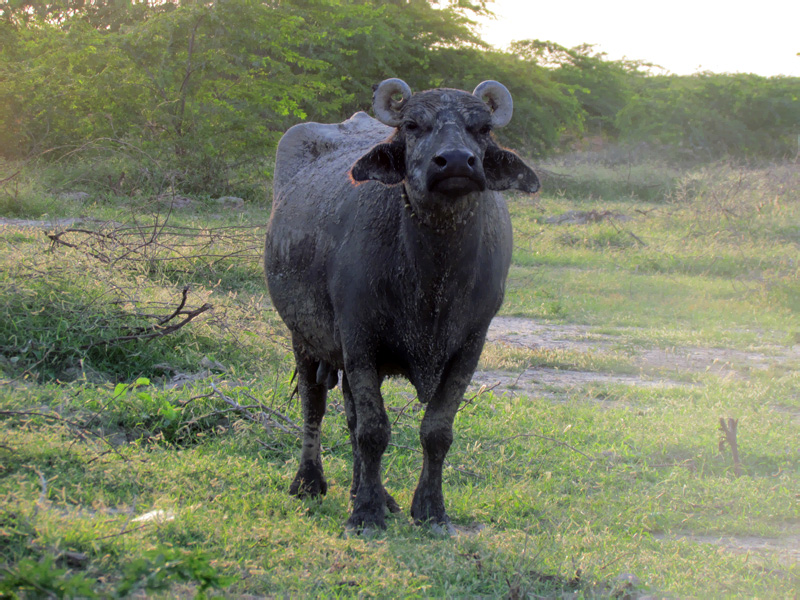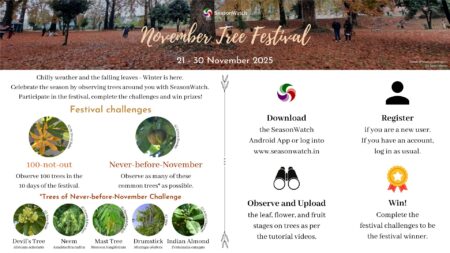When I started my PhD research field work, I had to change my shoes until I found a pair of thick-soled leather shoes that would survive the thorns of the Prosopis tree. The thorns were unlike anything I had seen, similar to Acacia, but longer, and extremely easy to find in the drylands of the Rann of Kutch.

The Banni habitat with a Prosopis in the bottom left corner
Soon I had to change my two-wheeler’s tyres to tubeless, and I got into the habit of carrying two spare tyres for the four-wheeler. It was like an evolutionary arms race. My problems were nothing compared to what the people living with these trees were facing. The relationship between this tree and me was turning into a war. And yet, by the end of my work in the Banni grasslands in Kutch, this tree had become an integral part of my life and my work. Invasive species have always received a negative response from people, especially from ecologists. Ironically, Prosopis juliflora (now named Neltuma juliflora) is one such invasive exotic alien tree that was introduced in this part of Kutch, in the state of Gujarat, to keep the landscape from “degrading” further into a desert. It was originally from South America. Over the years, it swiftly covered the majority of the best pastures in Kutch and almost 50% of the area covered by Banni grasslands. I went into the landscape with the same view, with the tree being seen as a “disturbance” and an unwanted obstacle or a disease in the landscape. The local people called it gando bavar, or the crazy acacia. Over time, it became clear that it was much more than an invasive species.

Although it had taken over grasslands and affected the availability of wild fodder for the livestock that the local communities bred and raised, Prosopis was integrating into their lives in many other ways, some of them even beneficial. The women liked it clearly because getting firewood did not require moving too far away from home. The nomadic Jatt community liked it because it provided an additional income, which helped them even during droughts, something that Kutch is famous for. People made charcoal out of Prosopis, and every day, many trucks full of that charcoal would leave by me to be sold in companies all around Gujarat and beyond. And now that the acacia was also reduced, Prosopis wood, although not of as great quality, became used for the construction of things. In most villages, in the squares or common spaces, it became the tree of shade. A few tall Prosopis trees were maintained and preferred in and around the houses as well as livestock resting areas to offer shade. Ecologists worked hard and showed that apart from affecting local plant diversity, the Prosopis might be reducing the groundwater levels in the area and increasing salinity. Restoration efforts here and there were done, even by the state, but like any tenacious invasive species, Prosopis thrived nonetheless. Besides, it provided plenty of sticky-sweet honey and even stickier gum (resin) that kids used to offer to me as candy. For some of the most marginalised families, it was the only source of livelihood. The long tubular inflorescences made of many tiny and somewhat fragrant flowers attracted many bees. The variety of things that this one species offered was quite astonishing. I realised that it was no longer an evil tree in my imagination and nor in the realities of people who lived with it.

All photos by Ovee Thorat.
About the author: Ovee Thorat is a researcher and a political ecologist. She teaches at Azim Premji University, Bangalore.




